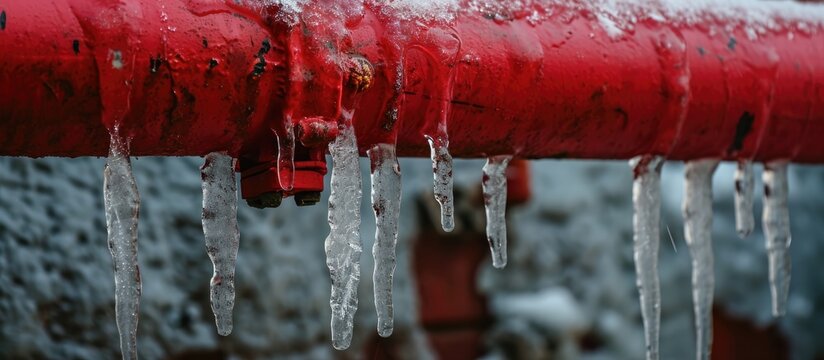Protecting Against Frozen Pipes in Cold Weather: Pro Tips
Protecting Against Frozen Pipes in Cold Weather: Pro Tips
Blog Article
What're your ideas regarding 6 Ways to Prevent Frozen Pipes?

Cold weather can damage your plumbing, particularly by freezing pipes. Here's exactly how to prevent it from happening and what to do if it does.
Intro
As temperatures drop, the risk of icy pipelines boosts, possibly causing pricey repair services and water damage. Comprehending exactly how to prevent icy pipelines is crucial for house owners in cold climates.
Prevention Tips
Protecting susceptible pipes
Cover pipelines in insulation sleeves or utilize heat tape to protect them from freezing temperatures. Focus on pipelines in unheated or external locations of the home.
Home heating techniques
Keep indoor rooms adequately heated, particularly areas with pipes. Open up closet doors to permit cozy air to distribute around pipes under sinks.
Exactly how to identify frozen pipelines
Search for decreased water flow from faucets, uncommon smells or sounds from pipelines, and noticeable frost on exposed pipelines.
Long-Term Solutions
Structural adjustments
Think about rerouting pipes far from outside wall surfaces or unheated areas. Add extra insulation to attic rooms, cellars, and crawl spaces.
Updating insulation
Buy top notch insulation for pipelines, attics, and walls. Correct insulation aids preserve regular temperatures and lowers the threat of icy pipelines.
Protecting Outside Pipes
Garden hose pipes and outside faucets
Detach and drain pipes garden hoses before winter season. Mount frost-proof spigots or cover exterior faucets with protected caps.
Recognizing Frozen Pipelines
What causes pipes to freeze?
Pipes freeze when revealed to temperature levels below 32 ° F (0 ° C) for expanded periods. As water inside the pipes freezes, it broadens, taxing the pipe wall surfaces and potentially causing them to burst.
Dangers and problems
Frozen pipes can result in water disruptions, building damages, and pricey repair services. Ruptured pipes can flooding homes and cause comprehensive architectural damages.
Indicators of Frozen Pipeline
Identifying icy pipelines early can stop them from breaking.
What to Do If Your Pipelines Freeze
Immediate actions to take
If you presume icy pipes, maintain taps open to ease pressure as the ice melts. Make use of a hairdryer or towels soaked in warm water to thaw pipes gradually.
Final thought
Protecting against frozen pipes needs aggressive measures and fast responses. By comprehending the reasons, indicators, and preventive measures, house owners can protect their pipes throughout winter.
6 Proven Ways to Prevent Frozen Pipes and Protect Your Home
Disconnect and Drain Garden Hoses
Before winter arrives, start by disconnecting your garden hoses and draining any remaining water. Close the shut-off valves that supply outdoor hose bibs and leave the outdoor faucet open to allow any residual water to drain. For extra protection, consider using faucet covers throughout the colder months. It’s also important to drain water from any sprinkler supply lines following the manufacturer’s directions.
Insulate Exposed Pipes
Insulating your pipes is an effective way to prevent freezing. Pipe insulation is readily available at home improvement stores and is relatively inexpensive. Pay close attention to pipes in unheated areas such as the attic, basement, crawl spaces, or garage. Apply foam insulation generously to create a buffer against the cold. You can also wrap your pipes in heat tape or thermostat-controlled heat cables for added warmth.
Seal Air Leaks
Inspect your home for any cracks or openings that could let in cold air. Seal any holes around the piping in interior or exterior walls, as well as the sill plates where your home rests on its foundation. Additionally, make sure to keep your garage door closed unless you’re entering or exiting. Leaving it open creates a significant air leak that can lead to frozen pipes.
Allow Warm Air Circulation
During cold snaps, it’s essential to allow warm air to circulate evenly throughout your home. Leave interior doors ajar to promote better airflow. Open kitchen and bathroom cabinets to help distribute heat consistently around the rooms. If you have small children or pets, be sure to remove any household chemicals or potentially harmful cleaners from open cabinets for safety.
Let Faucets Drip
A small trickle of water can make a big difference in preventing ice formation inside your pipes. When temperatures drop significantly, start a drip of water from all faucets served by exposed pipes. This continuous flow helps prevent the water from freezing. Additionally, running a few faucets slightly can relieve pressure inside the pipes, reducing the chances of a rupture if the water inside does freeze.
https://choateshvac.com/6-proven-ways-to-prevent-frozen-pipes-and-protect-your-home/

We hope you liked our section on 6 Ways to Prevent Frozen Pipes. Thanks a ton for taking the time to read through our blog post. Don't hesitate to take the opportunity to distribute this blog posting if you appreciated it. I recognize the value of your readership.
Click For More Information Report this page